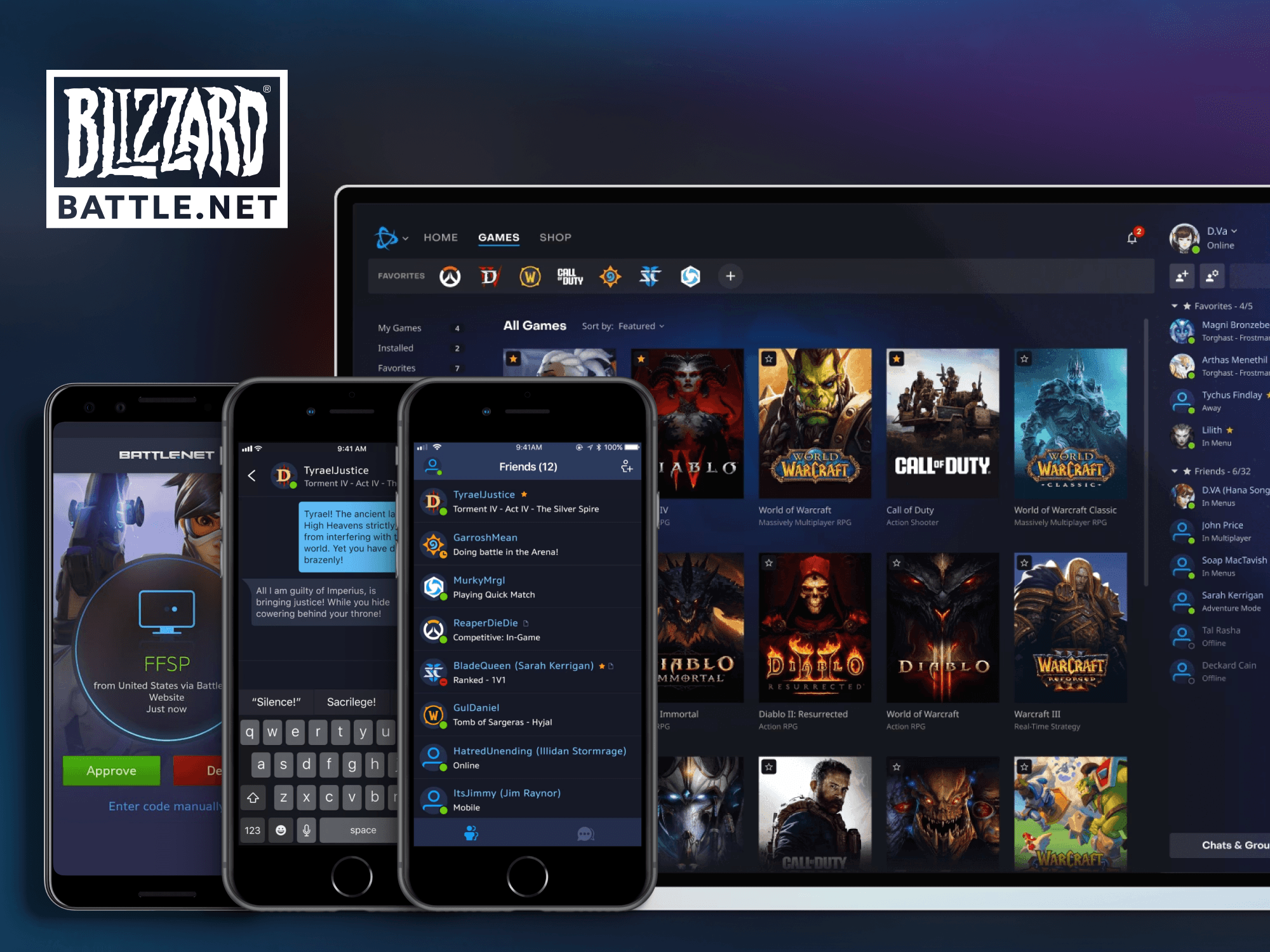INTRO
ROLE
UI/UX
Product Strategy
Technology Strategy
Strategic Communication
Content Pipelines
Design Leadership
Client/Context
Blizzard Entertainment
Year
2017-2020
Category
Security, Social & Systems
Credits
Work on this page represents collective work by dozens of talented designers and engineers in Web & Mobile and Battle.net.
$10M
Saved Annually
(Based on 2016, CS Contacts)
300M+
Messages Sent
(Internal Data, 2019)
50%
Increase in Time to Market
(Internal Data, May 2020)
Battle.net Authenticator
Small UX issues = Big $$
Blizzard started two-factor authentication in 2012 with physical devices. By 2015, 20% of customer service calls were for login issues with a bulk being lost authenticator, account restoration and lost access, costing millions in CS time.
We set out not just save money but improve the UX. The Battle.net Authenticator addressed key account issues with iCloud backup, easy restore and request approval. At the time, two-factor was still code-based. Not only could players get a push notification for login but they didn't even have to open the app - contextual actions allowed for one-button authentication.
Our target was 2-5% reduction in CS login contacts. We achieved ~15% in the first full year, saving ~$10M dollars annually.
BPNS, Utility Servers & Mobile Presence
Mobile infrastructure is the real hero
Authenticator required us to build push notification infrastructure called BPNS (Blizzard Push Notification Service). It was cost-effective and worked at enterprise scale. We used it for Hearthstone to notify people about new card packs and expansions, making $9M in one day.
BPNS was meant for more though. We set out to sell executives on a new use for BPNS. The Blizzard Messenger or what would become, the Battle.net Mobile App. We discovered quickly that to enable our vision to connect players asynchronously to their games and friends, we needed to build much more infrastructure.
Project Hermes
New school meets old school technology
Modern chat design was a well-understood space even in 2015 but Battle.net used old school active socket connections, had no chat history and didn't know what "Mobile" was.
In 2016, Web & Mobile was a different organization from Battle.net, which did not have its own mobile team. With executive greenlight, we launched Project Hermes: a co-located, joint strike team from both organizations set to develop the technology and app side-by-side.
In September of 2017, we launched the Blizzard Battle.net Mobile App, finally enabling Blizzard players to be "Mobile".
Systems to scale Battle.net
A focus on content and design systems
In 2018, I was promoted to Group Design Manager, Platform & Services which maintained my responsibility for mobile but added the underlying platforms and services that run all of Blizzard's websites and apps.
An internal redesign of the Battle.net Desktop app was launched called Project Magazine (seriously). It was intended to make Battle.net more than simply a game launcher and well…like a magazine with games, friends and events that also bridged e-commerce and Activision titles.
Activision Blizzard's content and e-commerce operation was preparing to grow by 2-5x and aging in-house systems were not up to the challenge.
Scaling design and content systems
Witchcraft & wizardry and structured content
In 2018, Blizzard was serving content via an aging in-house WYSIWYG tool called Damocles. With Project Magazine, a unified news platform, new games and 50+ websites online, we needed to replace the platform with a structured content model, isolating the raw content to work with many clients, implementing a custom version of ContentStack.
Multiple teams rolled out connected experiences and websites built on these new design and content systems including Blizzard News and many new game websites built on a internal toolset and module framework called Witchcraft that still largely underpins current live Blizzard websites.
These systems increased time to market by ~50%, reducing web build time by 40% and even lowering headcount needs leading to a design and content system that could scale with Blizzard (and Activision) without linear increases in resource costs.









